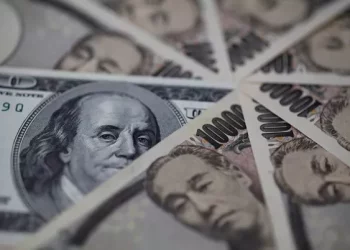The Swedish krona (SEK) is one of the most actively traded currencies in the world, often viewed as a relatively stable currency compared to those from emerging markets. However, like all currencies, its stability is subject to a variety of economic, political, and external market factors.
This article will explore the stability of the Swedish krona by analyzing historical trends, macroeconomic fundamentals, external influences, and the role of Sweden’s monetary policy. Additionally, we will compare SEK with other major currencies, particularly the euro (EUR) and the U.S. dollar (USD), to evaluate its overall resilience.
Understanding Currency Stability
A stable currency maintains a relatively consistent value over time, with minimal volatility and strong purchasing power. Stability is influenced by factors such as:
- Macroeconomic Strength – Strong economic growth, low inflation, and low unemployment contribute to currency stability.
- Monetary Policy – The central bank’s ability to control inflation and maintain interest rates plays a crucial role.
- Political Stability – Countries with stable governments and predictable policies typically have stronger currencies.
- External Trade and Capital Flows – A country’s trade balance and foreign investments impact exchange rate movements.
Using these criteria, we can evaluate whether SEK is truly a stable currency.
Historical Performance of the Swedish Krona
SEK has traditionally been a relatively stable currency but has shown notable fluctuations over the years.
1. Long-Term Decline Against Major Currencies
Over the past two decades, SEK has experienced depreciation against major global currencies such as the U.S. dollar and the euro. For example, in 2000, the exchange rate was around 8 SEK per USD, but by 2023, it had weakened to around 10-11 SEK per USD. This long-term trend suggests that while SEK is not volatile in the short term, it has gradually lost value against stronger global currencies.
Similarly, against the euro, SEK has fluctuated significantly. The EUR/SEK exchange rate was around 8.50 in 2010, but by 2023, it had weakened to around 11.50 SEK per EUR. This persistent depreciation raises concerns about its long-term stability.
2. Periods of High Volatility
While the krona is generally stable, it has experienced significant short-term volatility during global financial crises and economic downturns:
- 2008 Financial Crisis – SEK depreciated sharply as investors sought safe-haven currencies like the USD and CHF (Swiss franc).
- COVID-19 Pandemic (2020) – The uncertainty led to a selloff in SEK, but it later recovered as Sweden’s economy remained relatively resilient.
- 2022-2023 Global Inflation Crisis – SEK suffered from rising inflation and interest rate hikes worldwide, which weakened investor confidence.
Despite these fluctuations, SEK has typically rebounded from external shocks, demonstrating a degree of resilience.
Macroeconomic Fundamentals of Sweden
1. Economic Strength
Sweden has a highly developed and export-driven economy, known for strong institutions and a high standard of living. Key indicators of economic stability include:
- GDP Growth – Sweden’s economy has historically grown at a stable pace, with occasional downturns during global crises.
- Low Unemployment – Compared to many European economies, Sweden maintains relatively low unemployment rates, contributing to a stable labor market.
- Strong Industrial Base – Sweden is home to major multinational companies such as Volvo, Ericsson, and IKEA, which provide steady foreign income.
2. Inflation and Interest Rates
Sweden’s inflation rate has been relatively low compared to global standards, thanks to sound monetary policies by the Riksbank (Sweden’s central bank). However, during the post-pandemic period, inflation surged, reaching above 10% in 2022, forcing the Riksbank to implement aggressive rate hikes. High inflation erodes purchasing power and can weaken a currency if not controlled.
3. Trade and Current Account Balance
Sweden has historically maintained a positive current account balance, meaning it exports more than it imports. This trade surplus helps support SEK’s stability. However, global supply chain disruptions and declining demand from key trading partners (such as Germany and China) have affected Sweden’s trade position in recent years.
External Influences on SEK Stability
1. Dependence on the Eurozone
Although Sweden is a member of the European Union, it has opted not to adopt the euro. However, the Swedish economy is closely tied to the Eurozone, as the EU accounts for a large portion of its trade. Any economic slowdown in the Eurozone can negatively impact SEK.
For example, during the European debt crisis (2010-2012), the uncertainty surrounding the euro led to fluctuations in SEK’s value as investors speculated on Sweden’s economic future.
2. Global Risk Sentiment and Safe-Haven Currencies
SEK is often categorized as a small, open-economy currency, meaning it is more sensitive to global risk sentiment. During times of economic uncertainty, investors tend to move funds into safe-haven currencies like the U.S. dollar (USD), Swiss franc (CHF), or Japanese yen (JPY), leading to a temporary depreciation of SEK.
3. Foreign Exchange Market Speculation
Since SEK is not considered a major reserve currency like the USD or EUR, it is more prone to speculative trading. Hedge funds and institutional investors often take positions in SEK, leading to short-term volatility.
The Role of the Riksbank in SEK Stability
Sweden’s Riksbank plays a crucial role in stabilizing the krona through monetary policy. The central bank uses:
- Interest Rate Adjustments – To control inflation and influence exchange rates.
- Foreign Exchange Interventions – Although rare, the Riksbank can intervene if SEK experiences excessive volatility.
- Forward Guidance – Clear communication to the market helps prevent speculative attacks on SEK.
In 2022-2023, the Riksbank raised interest rates aggressively to combat inflation, which helped stabilize SEK but also slowed economic growth.
Conclusion
While SEK remains a reliable currency for trade and investment, its tendency to depreciate over the long term and its vulnerability to market speculation prevent it from being classified as a “safe-haven” currency. However, with prudent monetary policies by the Riksbank and a stable Swedish economy, SEK is expected to remain a viable and moderately stable currency in the global financial system.
Investors and forex traders should consider both short-term fluctuations and long-term trends when trading SEK, balancing risks with potential opportunities in the Swedish market.
Related Topics:

























